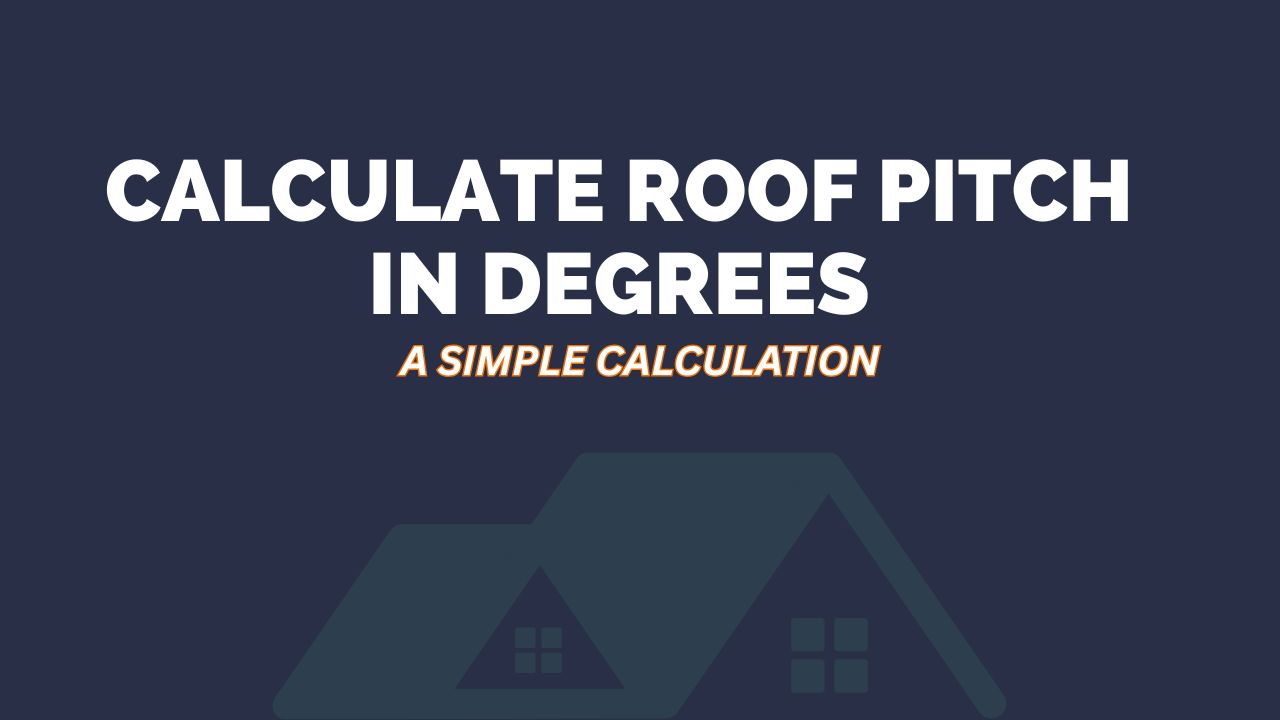How to Calculate Roof Pitch in Degrees: A Simple Guide for Homeowners and DIYers


When it comes to roofing, roof pitch plays a crucial role in determining how steep your roof is. It affects not only the overall look of your home but also how well rain, snow, and debris run off your roof. Whether you’re a builder, DIY homeowner, or roofer, understanding how to calculate the roof pitch in degrees is essential.
In this guide, we’ll explain what roof pitch means, show you the formula to convert it into degrees, and walk through an example step by step.
What Is Roof Pitch?
Roof pitch (also called roof slope) refers to how steep a roof is. It’s usually expressed as a ratio of the rise (vertical height) to the run (horizontal distance).
For example, a roof pitch of 4:12 means that for every 12 inches (1 foot) of horizontal distance, the roof rises 4 inches.
Formula to Calculate Roof Pitch in Degrees
To convert roof pitch into degrees, you use the arctangent (inverse tangent) function:
Formula:
Formula to Find the Slope (Pitch Ratio)
If you have the rise and run, you can first calculate the slope:
This slope value is then used to calculate the pitch in degrees using the previous formula.
Example: Convert a 6/12 Roof Pitch to Degrees
Let’s go through a practical example.
Given:
- Rise = 6 inches
- Run = 12 inches
Step 1: Find the slope
Step 2: Use the arctangent function
Step 3: Calculate the angle
Final Answer:
The roof pitch is approximately 26.6° for a 6/12 pitch roof.
Quick Roof Pitch Reference Table
| Pitch Ratio (Rise/Run) | Slope (Decimal) | Roof Angle (°) |
|---|---|---|
| 3/12 | 0.25 | 14.0° |
| 4/12 | 0.333 | 18.4° |
| 5/12 | 0.416 | 22.6° |
| 6/12 | 0.5 | 26.6° |
| 7/12 | 0.583 | 30.3° |
| 8/12 | 0.666 | 33.7° |
| 9/12 | 0.75 | 36.9° |
| 10/12 | 0.833 | 39.8° |
How to Measure Rise and Run on Your Roof
- Use a level: Place a 12-inch level horizontally on the roof surface.
- Measure rise: From the 12-inch mark, measure vertically up to the roof surface.
- The measured height is your rise (in inches).
- Run is always 12 inches in standard pitch notation (e.g., 4/12, 6/12, etc.).
Why Roof Pitch Matters
- Drainage: Steeper roofs shed water and snow more easily.
- Material selection: Low-pitch roofs need special waterproofing; high-pitch roofs can use shingles or tiles.
- Aesthetic appeal: The pitch defines your home’s profile and architectural style.